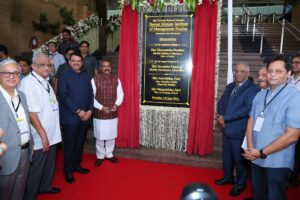
Amdocs, a leading provider of software and services to communications and media companies, today announced the findings of a new survey that reveals that nearly 80% of APAC CSPs expect the introduction of 5G to expand revenue opportunities with enterprise customers. It also finds that 9% of operators plan to offer 5G services commercially to this sector by the end of 2019, a figure that will increase to 47% by the end of 2020.
Conducted by market research and consultancy firm IDC, on behalf of Amdocs, the survey interviewed C-level executives and other senior management from 105 communications service providers across North America, Europe and Asia Pacific. The Asia- Pacific countries included New Zealand, Australia, India, Japan, Malaysia, Pakistan, Philippines, Thailand, Afghanistan, Bangladesh, Singapore, and Sri-Lanka. In-depth qualitative interviews were also conducted with a selection of respondents.
“Operators of 5G networks can support mission-critical enterprise communications, with performance backed by service-level agreements,” commented John Delaney, Associate VP of Mobility Research at IDC. “Our research shows that mobile operators are optimistic about the potential for 5G to support an expansion of their role in the enterprise market.”
“The survey clearly demonstrates that operators see 5G as a means to restore value around core connectivity services for business customers.” said Matthieu Loreille, VP Head of Consumer, Enterprise and Technology Marketing at Amdocs. “5G technologies such as network slicing will allow them to tailor the performance, security level and characteristics appropriate to each business, opening up differentiating monetization opportunities. Furthermore, by leveraging additional technologies such as artificial intelligence, edge computing and hybrid cloud, operators will be strongly positioned to support enterprises in their digital transformation journey. Effectively, this enables them to shift connectivity to the heart of their solutions with meaningful value-added services on top such as cybersecurity, cloud migration, hybrid cloud operations and many more.”
Regarding Network as a Service (NaaS), Loreille added, “5G, together with complementary technologies such as cloud, network softwarization, virtualization and automation will make this service a reality for business customers. This will enable them to build their own networks, aided by intuitive self-service portals that enhance the enterprise digital customer experience. But it is against this background that the diversity of 5G-enabled service offerings and new ways of consuming them will stretch the IT supporting stack, meaning that in many cases, they will need to be gradually modernized.”



